Day 1 of a rescheduled 3 day Spring Tour, to take advantage of the relaxation of Covid restrictions this week. Mostly warm in the long sunny spells, there were some cloudier periods when it felt a bit cooler. Some very dark clouds early afternoon were accompanied by some long rolls of thunder, but thankfully passed well to the south of us, and it wasn’t until we were on our way home that we drove into one of the forecast showers.
With a Caspian Tern over in the Broads for its second day this morning, we decided to head east for the day. It was a long drive over to Potter Heigham, but we left in good time and it was still early when we got to the car park. As we crossed the road and set off down the track, we heard a Cuckoo calling, and turned to see it flying away over the river. It was a cloudy start, and our first Common Swifts off the tour were chasing overhead. A Great Spotted Woodpecker came out of the small copse of trees and flew ahead of us, landing on a low gatepost by the track – an odd place to see one.
A pair of Egyptian Geese were close to the path on the grazing marshes. Further out, among the horses, was a lone Oystercatcher. Several Lapwings were flying round too. We could hear distant Lesser Whitethroat and Willow Warbler singing in the bushes and trees the other side of the marshes. Closer to us, both Sedge and Reed Warblers were singing from the reedy margins of the ditch, but were typically hard to see. Never mind, we would see lots later. A couple of Reed Buntings flew across the track. One or two Marsh Harriers quartered the marshes and a Common Buzzard circled overhead.
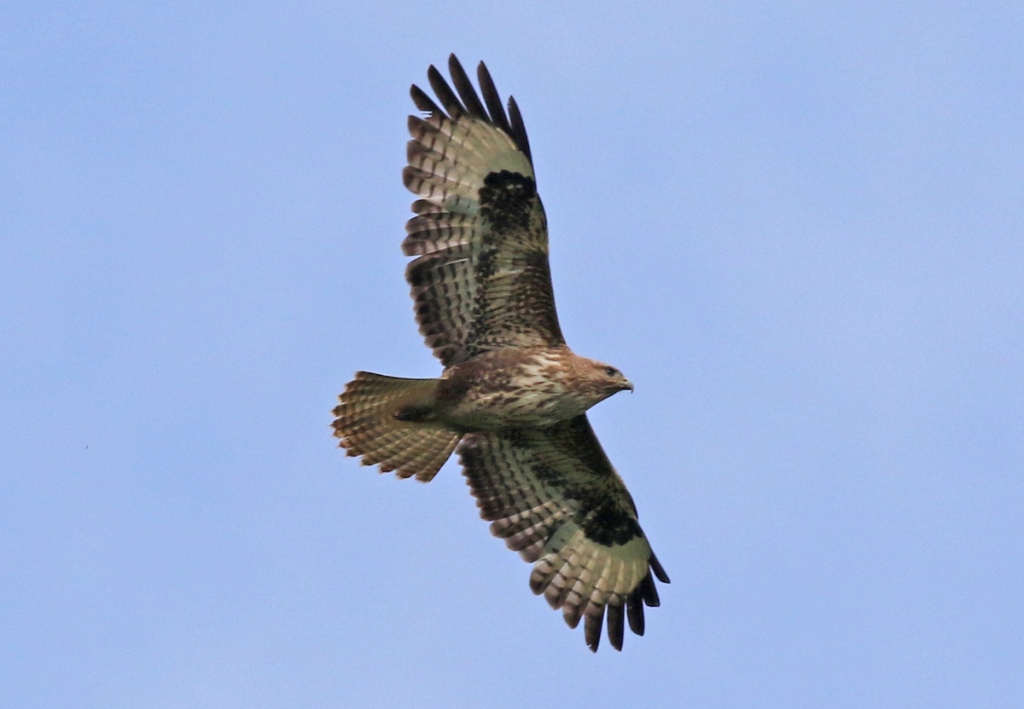
There were lots of Greylag Geese on the fields which flushed as a local farmer drove past in his truck. They flew across to the pools. At the first pool, as well as the geese, we could see a few Mallard and one or two Gadwall. A Little Egret was out in the shallow water in the far corner.
It’s yelping call alerted us to a Lesser White-fronted Goose in with the Greylags, dwarfed by its much larger cousins. Through the scope, we could see the white blaze extending up its forehead and the golden yellow eye-ring. This would be a rare bird here if it were wild, but unfortunately it is a known escapee which has been hanging around here for the last year or so, presumably having hopped the fence from a wildfowl collection somewhere.
The Caspian Tern had flown off once this morning, but thankfully returned, so we were keen to get round to the other side to see it, while making sure we didn’t miss anything this side on the way. Moving on to the next pool, a quick scan revealed two Common Pochard with more Greylags and a couple of distant Common Terns. The cloud was breaking now and it was warming up nicely as the sun was coming out. Having planned for the risk of rain which was forecast, we had to shed our coats.
Up to the corner, we climbed up onto the bank for a better view. On the corner pool we could see more Pochard, a couple of Tufted Ducks, and three late lingering Wigeon. Looking across to the other side, we could just see the Caspian Tern through the reeds, between some Cormorants roosting on one of the islands. A little further up, we got clear of the reeds and had a better if still distant view – we could see its huge red bill. It was standing in the shallow water next to a Herring Gull and didn’t look much smaller – Caspian Tern is the largest tern, like an enormous oversize Sandwich Tern with a massive red dagger for a bill.
With the Caspian Tern in the bag, we could relax a little, but we continued on round more slowly, for a closer view. A Willow Warbler was signing from the top of an oak across the other side of Candle Dyke. A Common Sandpiper was flushed from a mooring by a passing boat a little further along and a Common Tern flew past, looking much daintier than its cousin on the pools, with a much less threatening bill!
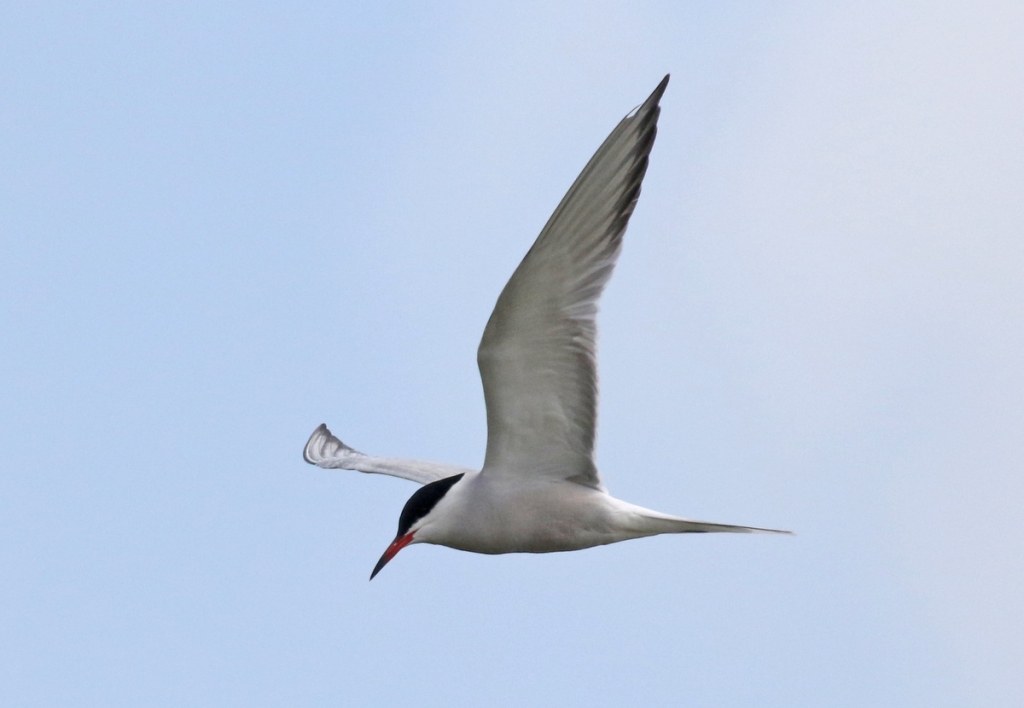
Walking round towards the river, there was lots of activity in the reeds. We finally got to see both Sedge Warbler and Reed Warblers here. We caught a quick glimpse of a Bearded Tit which zipped over the reeds and dropped down. It was carrying food in its bill, so we waited to see if it would come back out. Before it did, a second Bearded Tit flew in, this time the female, also carrying food in her bill. She perched for a few seconds in the reeds, allowing us all to get on her, before she dropped in, as the male flew out and disappeared back away. Obviously they are feeding a hungry brood in the reeds there.
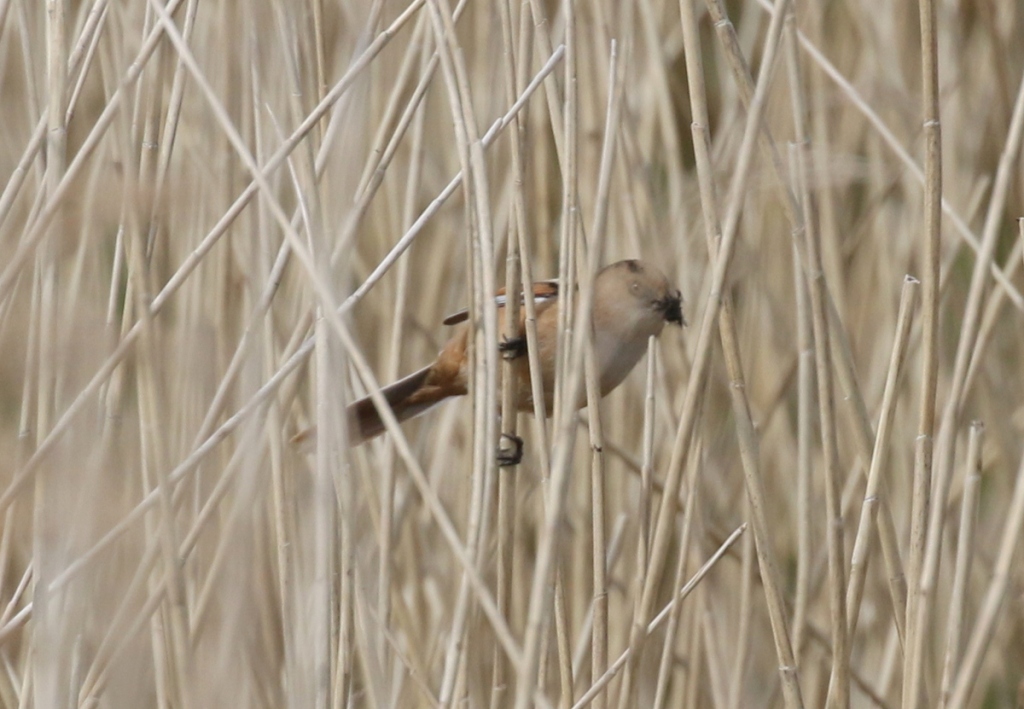
Walking up beside the river, we arrived opposite the pool where the Caspian Tern was standing. But we had only just put up the scopes before it took off, before everyone could get a look. We watched it fly off east, circling over the reeds for a while, gaining height, before it disappeared from view. We were very pleased we had stopped to look at it distantly on the way round!
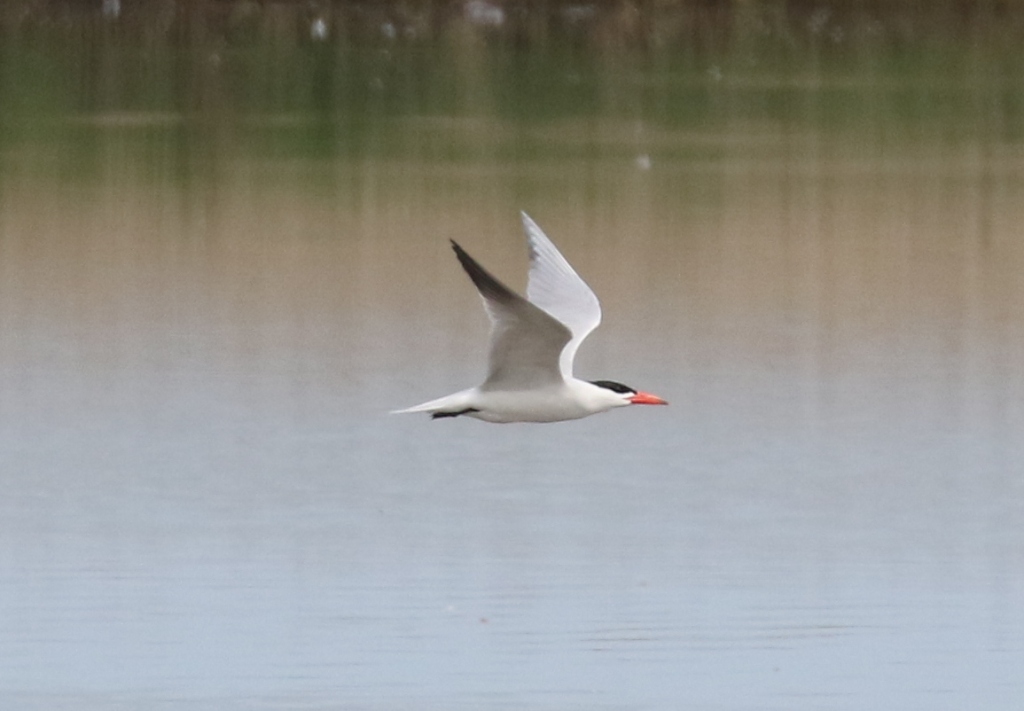
The Caspian Tern had flown off earlier and returned, so we figured it was probably just heading off to fish somewhere and would most likely be back here again at some point. The only question was how long, but we thought we would have a more leisurely look around now and see what happened. There were two Shoveler out on this pool. A Great Crested Grebe was over in the far corner and then another appeared from behind the reeds at the front. Another male Bearded Tit was chasing a rival round and round over the reeds.
Walking up to the last pool from the river bank, we could see a single Avocet on one of the islands. A pair of Teal nearby would be the only ones we would see – most have left already, heading off to northern Europe for the breeding season. We hadn’t been here long though, before we turned to see the Caspian Tern flying back in behind us. It landed back down on the pool where it had been before, so we walked straight back. Now we all had a really good view of it through the scopes.
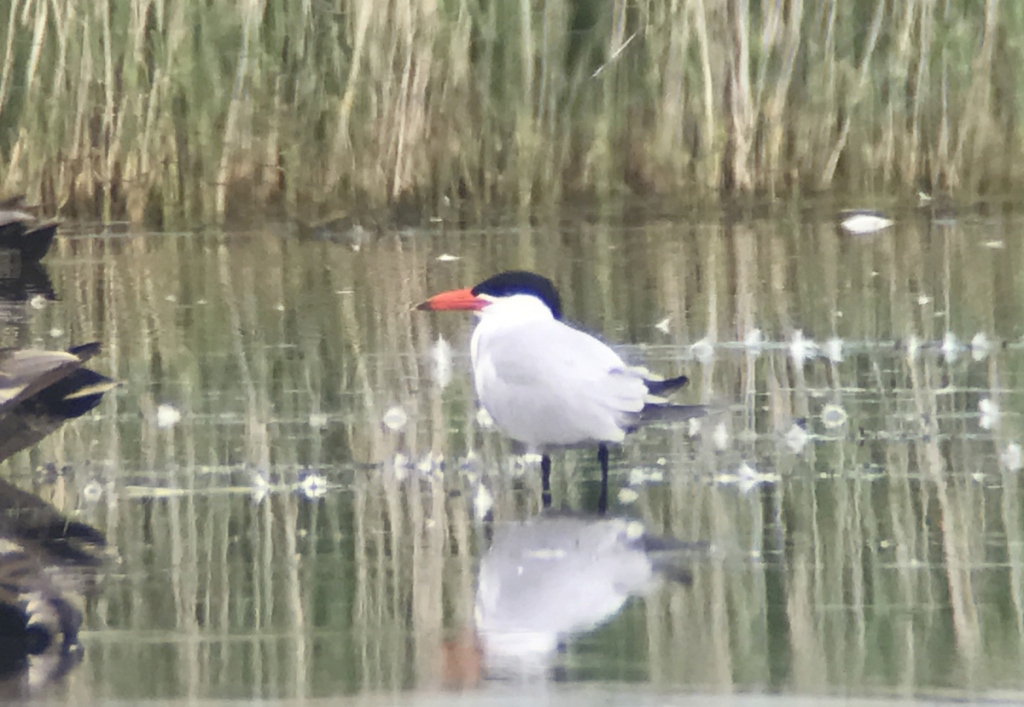
Caspian Tern is a rare visitor to the UK, with just a few records most years. They breed in small numbers around the Baltic, as well as further over in SE Europe, wintering down in West Africa. Potter Heigham seems to be a good site for them – there was one here last year too.
We could see dark clouds way off west, so we decided to walk slowly back. A Cetti’s Warbler was singing in the bushes by the river, and we had a quick flash of a rounded chestnut-red tail as it flew past. Two different male Marsh Harriers flew past over the reeds. A couple of Common Whitethroats were in the trees, three Reed Warblers chased round and a Chiffchaff was singing in the old orchard by the mill.
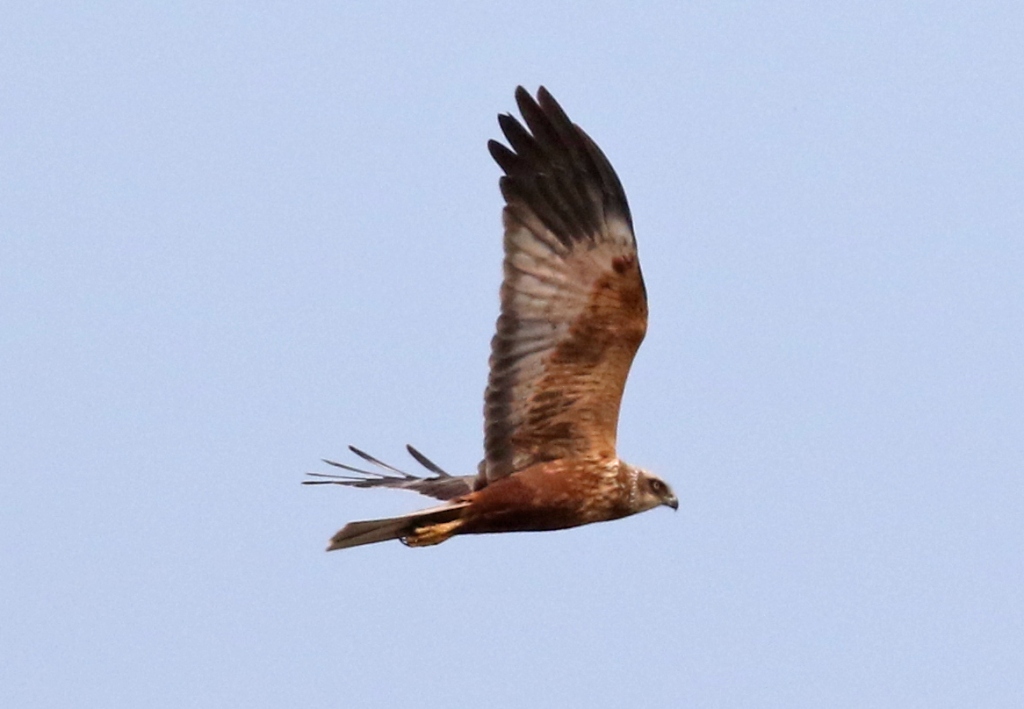
We headed round to Hickling Broad to use the facilities and as the sun was out now, we decided to have an early lunch in the picnic area before heading out onto the reserve. A juvenile Robin was calling in the trees behind the Visitor Centre – good to see some early broods are proving productive, despite the cool spring we are having. As we sat down to eat, a Hobby circled high over the trees beyond. A pair of Great Tits were flying in and out of a nearby nest box. Two Bullfinch called, and we looked over to see them fly across the far end of the picnic area.
There were some dark clouds to the south of us, and we heard some long and rather ominous rolls of thunder from that direction, but it looked like they would probably miss us, so we headed out onto the reserve. As we set off down the track, there were House Martins overhead calling and we found a couple of Sand Martins with them.
As we got to the corner with the Stubb Mill track, one of the group spotted a Common Crane flying over high in the distance – the first of many, as it would prove later. There were lots of Hobbys out over the reedbed beyond the water, flying back and forth, hawking for insects, some low, some circling up much higher. Further over, there were more perched in the tops of the dead trees, probably around 15 Hobbys in all, always great to watch these spring gatherings. A Cuckoo flew over the back of the pool, up over the bank, and disappeared behind the trees towards the Visitor Centre.
We walked down the track towards Stubb Mill. There had been a Wood Sandpiper on the marsh here yesterday, so we scanned the islands and the margins of the water. A small flock of seven Ringed Plovers flew up and disappeared off west, presumably of the Tundra race, which are always late migrants through here. Again we heard a Lesser White-fronted Goose calling and looked over on the island to see it in with the Greylags. Presumably the same bird we had seen earlier at Potter Heigham, as it is only a short distance away as the goose flies.
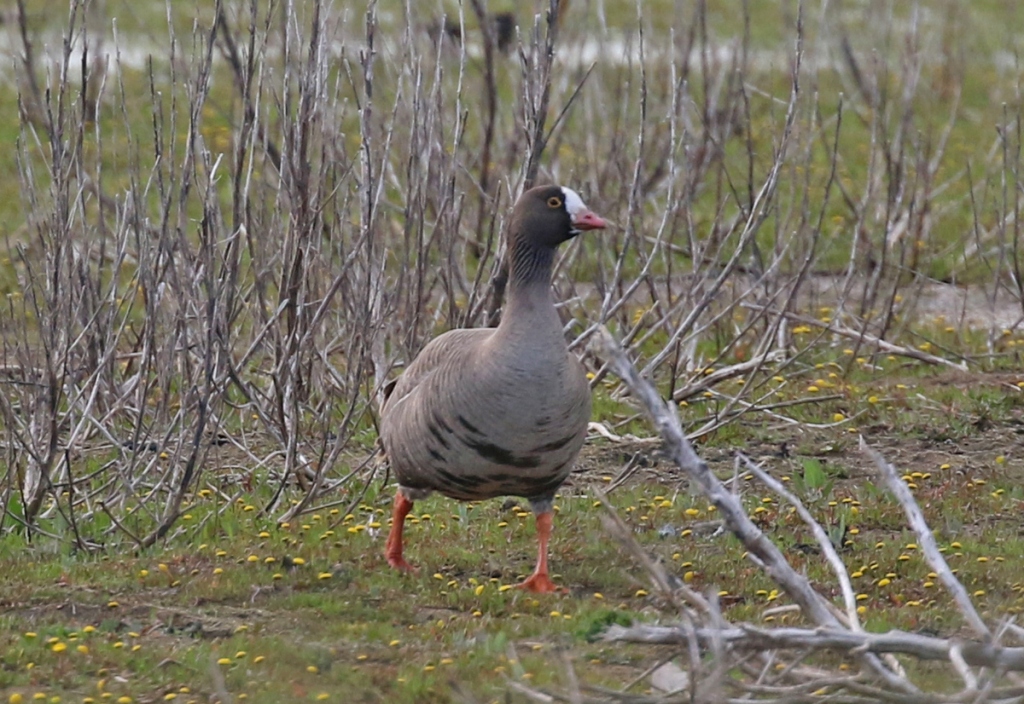
A much closer Hobby flew in over the water and over the track behind us. While everyone was watching it, we turned to see a Grey Heron fly up from the reeds beyond the pool and noticed a Common Crane in the reeds too, a little further back. We got it in the scope and watched it for some time, preening, then walking around through the reeds. Then it took off and flew towards us, unfortunately attracting the attention of one of the Shelduck, which decided to mob it as it flew over the water. As the Shelduck finally gave up, we watched as the Common Crane disappeared away over the fields to the north.
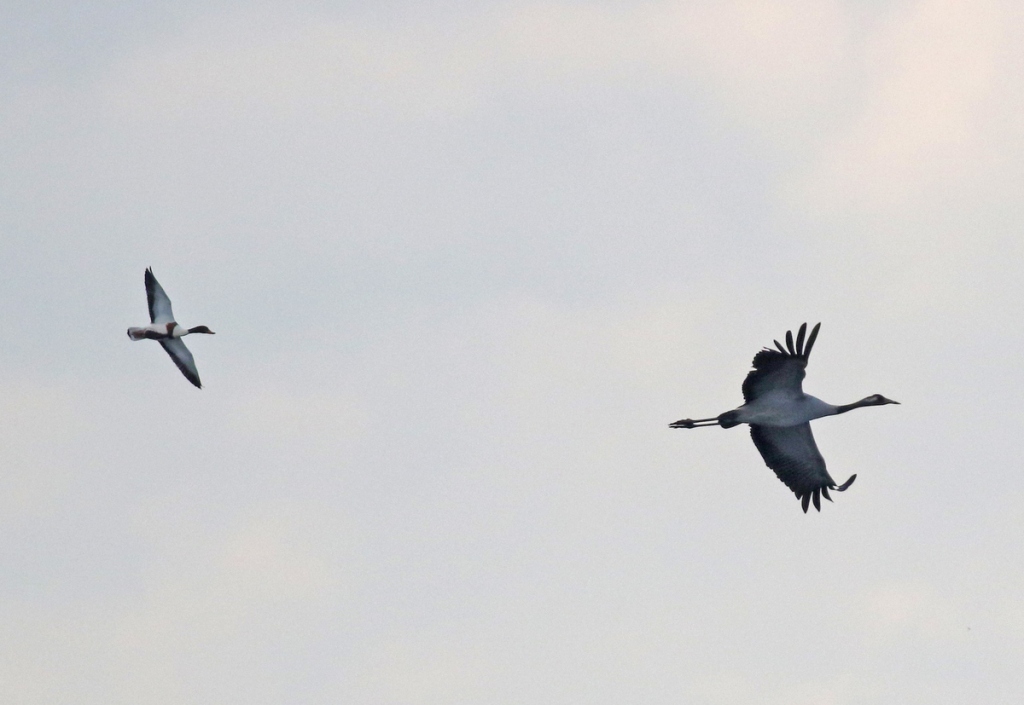
As we continued on down the track, we could hear a Bittern booming from somewhere deep in the reeds now. We scanned the pools on the way, but the only other waders we could find were Redshanks. When we got to the end, there were more Hobbys zooming about low over the reeds and we looked past them to the east and noticed four Common Cranes circling low over the bushes.
Another four Cranes circled up nearby and all eight then turned and started to fly towards us. They stopped to circle again, giving us a great view, then started calling and drifted away to the north over Stubb Mill, where we lost sight of them behind the trees.
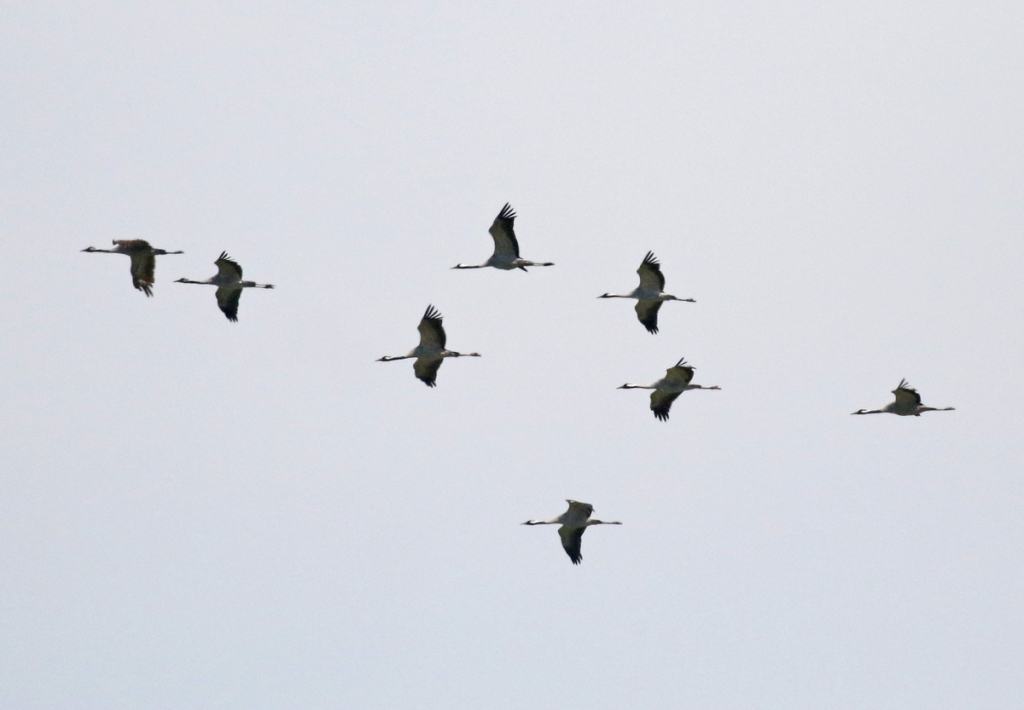
After watching the Cranes, we turned our attention back to the pools, looking back parallel with the track. It was a better view from up on the top of the bank. There were two Little Grebes diving in the blanket weed here, more Redshanks and several juvenile Lapwings which teased us into thinking they might be a different small wader before we saw them clearly. Then we did find a different small wader right up at the far end, walking in and out of a line of thick reeds and rushes. It was the Wood Sandpiper we had been searching for – a distant view, but better than nothing!
The dark clouds had remained off to the south as we had hoped and the sun had come out again now, encouraging a flush of insects. A Four-spotted Chaser dragonfly was drying its still papery wings on the bank in the sunshine, with several also freshly emerged Azure Damselflies fluttering around nearby. A Small Copper butterfly was trying to find flowers to feed on, our first of the year.
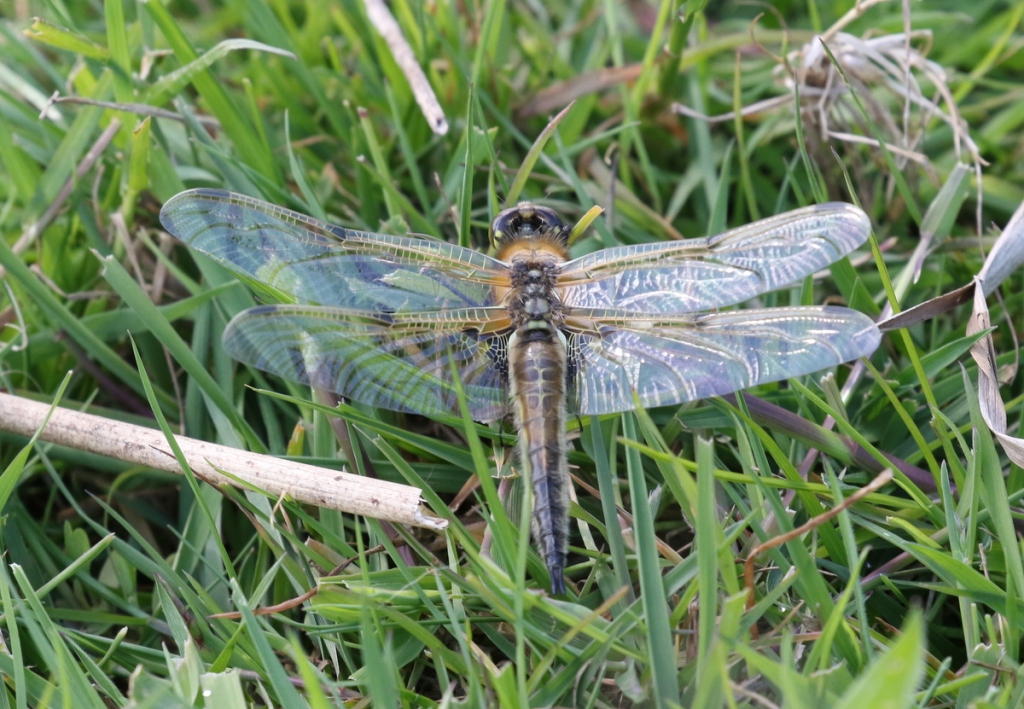
We had been intending to walk up to Bittern Hide, but we met someone here who had just come back from there and had seen nothing we hadn’t already seen. A Great Reed Warbler had been found at Breydon Water this morning and after being very elusive, it now seemed to be showing on and off. As it was just a short drive from here, we decided to go over there to see if we could see it.
As we arrived in the car park, a friendly face walking back confirmed the Great Reed Warbler was still present, so we set off out along the north wall. We could see six people standing on the path on the first corner, looking down across the railway line to the bushes beyond. As we walked up, we could immediately hear the Great Reed Warbler singing.
The Great Reed Warbler was singing from inside the bush and looking in, we could just see it. We got it in the scopes and had various views of different parts of it as it moved around. Great Reed Warblers are scarce visitors from continental Europe, overshooting in spring as they fly back from Africa and ending up in the UK. Normally a bird of reedbeds, like a much larger version of our Reed Warbler, this one had probably been attracted down by the sight of Breydon Water and found the best habitat it could to feed.
After a while it stopped singing and went quiet, disappeared into the bushes. It had earlier come out into the open when it stopped singing, but all we could see now were a couple of Blackcaps, male & female. A regular Reed Warbler appeared too, in the same bush. People were getting tired now so we decided it was time to walk back.
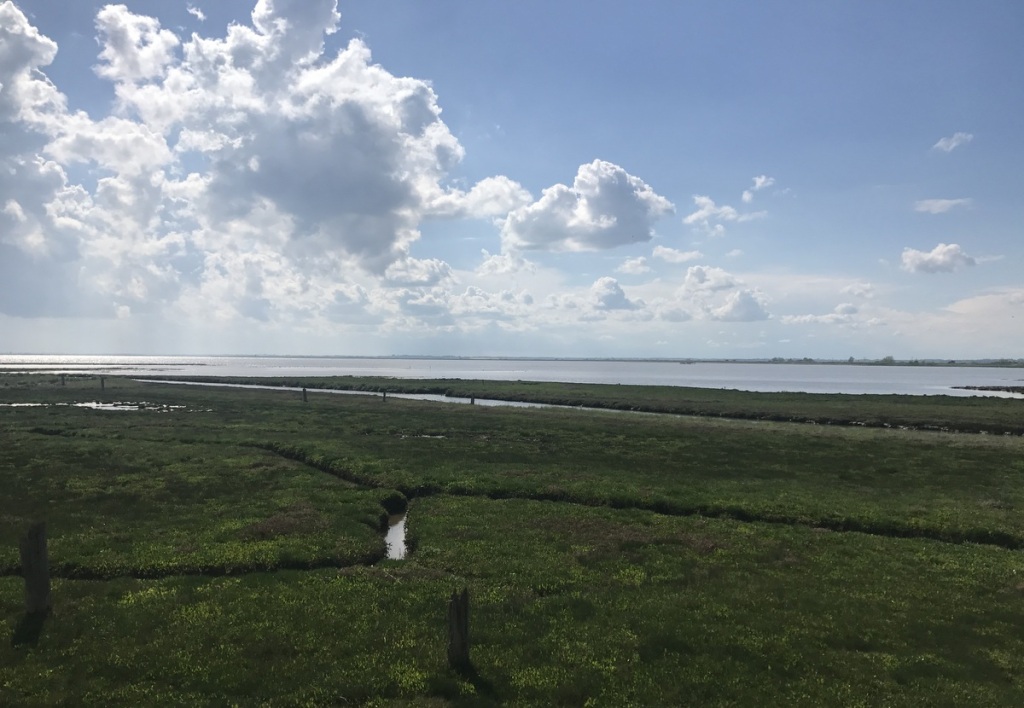
Some of the group were a little too keen to get back to the minibus and sit down, as they disappeared over the horizon before we the rest of us had packed away our tripods. Those who had brought their scopes out stopped on the way back to scan Breydon Water for waders. The islands of vegetation at the edge of the saltmarsh are a regular roosting site for waders.
We had already seen a flock of Curlews out there, and stopping to scan now we found a group of at least 19 Whimbrel too, tucked down in the vegetation a little further over. A lone wader on the end of a vegetated spit a bit further round was a single Greenshank.
It was a long drive back and time was getting on, so the rest of us headed back to join the others in the minibus. As we cut round past Norwich we drove into a heavy rain shower – we had been very lucky with the weather today. A great start to our three day tour, with two new birds for most of the group.
















